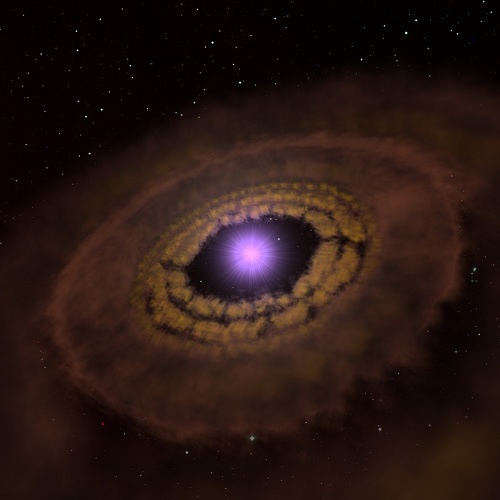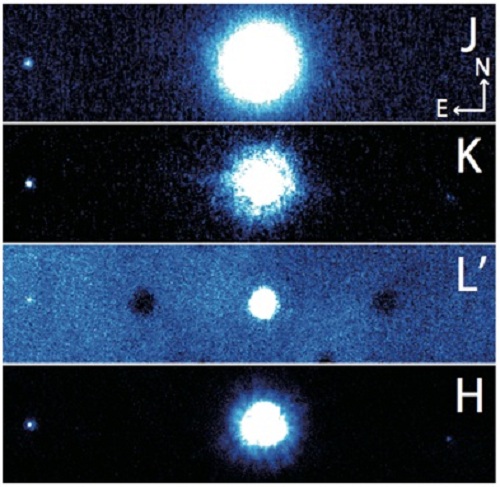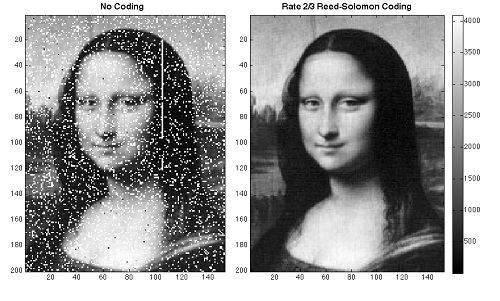Centauri Dreams
Imagining and Planning Interstellar Exploration
TW Hydrae: An Infant Planetary System Analyzed
You have to like the attitude of Thomas Henning (Max-Planck-Institut für Astronomie). The scientist is a member of a team of astronomers whose recent work on planet formation around TW Hydrae was announced this afternoon. Their work used data from ESA’s Herschel space observatory, which has the sensitivity at the needed wavelengths for scanning TW Hydrae’s protoplanetary disk, along with the capability of taking spectra for the telltale molecules they were looking for. But getting observing time on a mission like Herschel is not easy and funding committees expect results, a fact that didn’t daunt the researcher. Says Henning, “If there’s no chance your project can fail, you’re probably not doing very interesting science. TW Hydrae is a good example of how a calculated scientific gamble can pay off.”
I would guess the relevant powers that be are happy with this team’s gamble. The situation is this: TW Hydrae is a young star of about 0.6 Solar masses some 176 light years away. The proximity is significant: This is the closest protoplanetary disk to Earth with strong gas emission lines, some two and a half times closer than the next possible subjects, and thus intensely studied for the insights it offers into planet formation. Out of the dense gas and dust here we can assume that tiny grains of ice and dust are aggregating into larger objects and one day planets.

Image: Artist’s impression of the gas and dust disk around the young star TW Hydrae. New measurements using the Herschel space telescope have shown that the mass of the disk is greater than previously thought. Credit: Axel M. Quetz (MPIA).
The challenge of TW Hydrae, though, has been that the total mass of the molecular hydrogen gas in its disk has remained unclear, leaving us without a good idea of the particulars of how this infant system might produce planets. Molecular hydrogen does not emit detectable radiation, while basing a mass estimate on carbon monoxide is hampered by the opacity of the disk. For that matter, basing a mass estimate on the thermal emissions of dust grains forces astronomers to make guesses about the opacity of the dust, so that we’re left with uncertainty — mass values have been estimated anywhere between 0.5 and 63 Jupiter masses, and that’s a lot of play.
Error bars like these have left us guessing about the properties of this disk. The new work takes a different tack. While hydrogen molecules don’t emit measurable radiation, those hydrogen molecules that contain a deuterium atom, in which the atomic nucleus contains not just a proton but an additional neutron, emit significant amounts of radiation, with an intensity that depends upon the temperature of the gas. Because the ratio of deuterium to hydrogen is relatively constant near the Sun, a detection of hydrogen deuteride can be multiplied out to produce a solid estimate of the amount of molecular hydrogen in the disk.
The Herschel data allow the astronomers to set a lower limit for the disk mass at 52 Jupiter masses, the most useful part of this being that this estimate has an uncertainty ten times lower than the previous results. A disk this massive should be able to produce a planetary system larger than the Solar System, which scientists believe was produced by a much lighter disk. When Henning spoke about taking risks, he doubtless referred to the fact that this was only the second time hydrogen deuteride has been detected outside the Solar System. The pitch to the Herschel committee had to be persuasive to get them to sign off on so tricky a detection.
But 36 Herschel observations (with a total exposure time of almost seven hours) allowed the team to find the hydrogen deuteride they were looking for in the far-infrared. Water vapor in the atmosphere absorbs this kind of radiation, which is why a space-based detection is the only reasonable choice, although the team evidently considered the flying observatory SOFIA, a platform on which they were unlikely to get approval given the problematic nature of the observation. Now we have much better insight into a budding planetary system that is taking the same route our own system did over four billion years ago. What further gains this will help us achieve in testing current models of planet formation will be played out in coming years.
The paper is Bergin et al., “An Old Disk That Can Still Form a Planetary System,” Nature 493 ((31 January 2013), pp. 644-646 (preprint). Be aware as well of Hogerheijde et al., “Detection of the Water Reservoir in a Forming Planetary System,” Science 6054 (2011), p. 338. The latter, many of whose co-authors also worked on the Bergin paper, used Herschel data to detect cold water vapor in the TW Hydrae disk, with this result:
Our Herschel detection of cold water vapor in the outer disk of TW Hya demonstrates the presence of a considerable reservoir of water ice in this protoplanetary disk, sufficient to form several thousand Earth oceans worth of icy bodies. Our observations only directly trace the tip of the iceberg of 0.005 Earth oceans in the form of water vapor.
Clearly, TW Hydrae has much to teach us.
Addendum: This JPL news release notes that although a young star, TW Hydrae had been thought to be past the stage of making giant planets:
“We didn’t expect to see so much gas around this star,” said Edwin Bergin of the University of Michigan in Ann Arbor. Bergin led the new study appearing in the journal Nature. “Typically stars of this age have cleared out their surrounding material, but this star still has enough mass to make the equivalent of 50 Jupiters,” Bergin said.

Explaining Retrograde Orbits
While radial velocity and transit methods seem to get most of the headlines in exoplanet work, there are times when direct imaging can clarify things found by the other techniques. A case in point is the HAT-P-7 planetary system some 1000 light years from Earth in the constellation Cygnus. HAT-P-7b was interesting enough to begin with given its retrograde orbit around the primary (meaning its orbit was opposite to the spin of its star). Learning how a planet can emerge in a retrograde orbit demands learning more about the system at large, which is why scientists from the University of Tokyo began taking high contrast images of the HAT-P-7 system.
It had been Norio Narita (National Astronomical Observatory of Japan) who, in 2008, discovered evidence of HAT-P-7b’s retrograde orbit. Narita’s team has now used adaptive optics at the Subaru Telescope to measure the proper motion of what turns out to be a small companion star now designated HAT-P-7B. The team was also able to confirm a second planet candidate that had been first reported in 2009. The latter, a gas giant dubbed HAT-P-7c, orbits between the orbits of the retrograde planet (HAT-P-7b) and the newfound companion star.

Image: HAT-P-7 and its companion star in images obtained with the Subaru Telescope. IRCS (Infrared Camera and Spectrograph) captured the images in J band (1.25 micron), K band (2.20 micron), and L’ band (3.77 micron) in August 2011, and HiCIAO captured the image in H band (1.63 micron) in July 2012. North is up and east is left. The star in the middle is the central star HAT-P-7, and the one on the east (left) side is the companion star HAT-P-7B, which is separated from HAT-P-7 by more than about 1200 AU. The companion is a star with a low mass only a quarter of that of the Sun. The object on the west (right) side is a very distant, unrelated background star. (Credit: NAOJ)
This Subaru Telescope news release notes the current thinking of Narita’s team on how the retrograde orbit emerged in this system. Key to the puzzle is the Kozai mechanism, first described in the 1960s, which has been found to explain the irregular orbits of everything from irregular planetary moons to trans-Neptunian objects, and has been applied to various exoplanets. The Kozai mechanism says that orbital eccentricity can become orbital inclination, with perturbations leading to the periodic exchange of the two. In other words, what had been a circular but highly-inclined orbit can become an eccentric orbit at a lower inclination.
Ultimately, the effects can be far-reaching as planetary orbits change over time. Can the process be sequential? In the HAT-P-7 system, the researchers are suggesting that the companion star (HAT-P-7B) affected the orbit of the newly confirmed planet HAT-P-7c through the Kozai mechanism, causing orbital eccentricity to be exchanged for inclination. With its orbit now significantly inclined in relation to the central star, Hat-P-7c then affected the inner planet (HAT-P-7b) through the same mechanism, causing its orbit to become retrograde.
The researchers go on to make the case for direct imaging to check for stellar companions that can have a significant effect on planetary orbits. From the paper:
Thus far, the existence of possible faint outer companions around planetary systems has not been checked and is often overlooked, even though the Kozai migration models assume the presence of an outer companion. To further discuss planetary migration using the information of the RM [Rossiter-McLaughlin] e?ect / spot-crossing events as well as signi?cant orbital eccentricities, it is important to incorporate information regarding the possible or known existence of binary companions. This is also because a large fraction of the stars in the universe form binary systems… Thus it would be important to check the presence of faint binary companions by high-contrast direct imaging. In addition, if any outer binary companion is found, it is also necessary to consider the possibility of sequential Kozai migration in the system, since planet-planet scattering, if it occurs, is likely to form the initial condition of such planetary migration.
We have much to learn about retrograde orbits and the rippling effects of the Kozai mechanism are a possibility that will have to be weighed against other observations. Whether the researchers can make this case stick or not, the fact that so many ‘hot Jupiters’ are themselves in highly inclined or even retrograde orbits tells us how important it will be to work these findings into our theories of planet formation and migration. Direct imaging from the SEEDS project (Strategic Exploration of Exoplanets and Disks with Subaru Telescope) should prove useful as we continue to work on direct imaging of exoplanets around hundreds of nearby stars.
The paper is Narita et al., “A Common Proper Motion Stellar Companion to HAT-P-7,” Publications of the Astronomical Society of Japan, Vol. 64, L7 (preprint).

Data Storage: The DNA Option
One of the benefits of constantly proliferating information is that we’re getting better and better at storing lots of stuff in small spaces. I love the fact that when I travel, I can carry hundreds of books with me on my Kindle, and to those who say you can only read one book at a time, I respond that I like the choice of books always at hand, and the ability to keep key reference sources in my briefcase. Try lugging Webster’s 3rd New International Dictionary around with you and you’ll see why putting it on a Palm III was so delightful about a decade ago. There is, alas, no Kindle or Nook version.
Did I say information was proliferating? Dave Turek, a designer of supercomputers for IBM (world chess champion Deep Blue is among his creations) wrote last May that from the beginning of recorded time until 2003, humans had created five billion gigabytes of information (five exabytes). In 2011, that amount of information was being created every two days. Turek’s article says that by 2013, IBM expects that interval to shrink to every ten minutes, which calls for new computing designs that can handle data density of all but unfathomable proportions.
A recent post on Smithsonian.com’s Innovations blog captures the essence of what’s happening:
But how is this possible? How did data become such digital kudzu? Put simply, every time your cell phone sends out its GPS location, every time you buy something online, every time you click the Like button on Facebook, you’re putting another digital message in a bottle. And now the oceans are pretty much covered with them.
And that’s only part of the story. Text messages, customer records, ATM transactions, security camera images…the list goes on and on. The buzzword to describe this is “Big Data,” though that hardly does justice to the scale of the monster we’ve created.
The article rightly notes that we haven’t begun to catch up with our ability to capture information, which is why, for example, so much fertile ground for exploration can be found inside the data sets from astronomical surveys and other projects that have been making observations faster than scientists can analyze them. Learning how to work our way through gigantic databases is the premise of Google’s BigQuery software, which is designed to comb terabytes of information in seconds. Even so, the challenge is immense. Consider that the algorithms used by the Kepler team, sharp as they are, have been usefully supplemented by human volunteers working with the Planet Hunters project, who sometimes see things that computers do not.

But as we work to draw value out of the data influx, we’re also finding ways to translate data into even denser media, a prerequisite for future deep space probes that will, we hope, be gathering information at faster clips than ever before. Consider work at the European Bioinformatics Institute in the UK, where researchers Nick Goldman and Ewan Birney have managed to code Shakespeare’s 154 sonnets into DNA, in which form a single sonnet weighs 0.3 millionths of a millionth of a gram. You can read about this in Shakespeare and Martin Luther King demonstrate potential of DNA storage, an article on their paper in Nature which just ran in The Guardian.
Image: Coding The Bard into DNA makes for intriguing data storage prospects. This portrait, possibly by John Taylor, is one of the few images we have of the playwright (now on display at the National Portrait Gallery in London).
Goldman and Birney are talking about DNA as an alternative to spinning hard disks and newer methods of solid-state storage. Their work is given punch by the calculation that a gram of DNA could hold as much information as more than a million CDs. Here’s how The Guardian describes their method:
The scientists developed a code that used the four molecular letters or “bases” of genetic material – known as G, T, C and A – to store information.
Digital files store data as strings of 1s and 0s. The Cambridge team’s code turns every block of eight numbers in a digital code into five letters of DNA. For example, the eight digit binary code for the letter “T” becomes TAGAT. To store words, the scientists simply run the strands of five DNA letters together. So the first word in “Thou art more lovely and more temperate” from Shakespeare’s sonnet 18, becomes TAGATGTGTACAGACTACGC.
The converted sonnets, along with DNA codings of Martin Luther King’s ‘I Have a Dream’ speech and the famous double helix paper by Francis Crick and James Watson, were sent to Agilent, a US firm that makes physical strands of DNA for researchers. The test tube Goldman and Birney got back held just a speck of DNA, but running it through a gene sequencing machine, the researchers were able to read the files again. This parallels work by George Church (Harvard University), who last year preserved his own book Regenesis via DNA storage.
The differences between DNA and conventional storage are striking. From the paper in Nature (thanks to Eric Davis for passing along a copy):
The DNA-based storage medium has different properties from traditional tape- or disk-based storage.As DNA is the basis of life on Earth, methods for manipulating, storing and reading it will remain the subject of continual technological innovation.As with any storage system, a large-scale DNA archive would need stable DNA management and physical indexing of depositions.But whereas current digital schemes for archiving require active and continuing maintenance and regular transferring between storage media, the DNA-based storage medium requires no active maintenance other than a cold, dry and dark environment (such as the Global Crop Diversity Trust’s Svalbard Global Seed Vault, which has no permanent on-site staff) yet remains viable for thousands of years even by conservative estimates.
The paper goes on to describe DNA as ‘an excellent medium for the creation of copies of any archive for transportation, sharing or security.’ The problem today is the high cost of DNA production, but the trends are moving in the right direction. Couple this with DNA’s incredible storage possibilities — one of the Harvard researchers working with George Church estimates that the total of the world’s information could one day be stored in about four grams of the stuff — and you have a storage medium that could handle vast data-gathering projects like those that will spring from the next generation of telescope technology both here on Earth and aboard space platforms.
The paper is Goldman et al., “Towards practical, high-capacity, low-maintenance information storage in synthesized DNA,” Nature, published online 23 January 2013.

The Velocity of Thought
How fast we go affects how we perceive time. That lesson was implicit in the mathematics of Special Relativity, but at the speed most of us live our lives, easily describable in Newtonian terms, we could hardly recognize it. Get going at a substantial percentage of the speed of light, though, and everything changes. The occupants of a starship moving at close to 90 percent of the speed of light age at half the rate of their counterparts back on Earth. Push them up to 99.999 percent of c and 223 years go by on Earth for every year they experience.
Thus the ‘twin paradox,’ where the starfaring member of the family returns considerably younger than the sibling left behind. Carl Sagan played around with the numbers in the 1960s to show that a spacecraft moving at an acceleration of one g would be able to reach the center of the galaxy in 21 years (ship-time), while tens of thousands of years passed on Earth. Indeed, keep the acceleration constant and our crew can reach the Andromeda galaxy in 28 years, a notion Poul Anderson dealt with memorably in the novel Tau Zero.

Image: A Bussard ramjet in flight, as imagined for ESA’s Innovative Technologies from Science Fiction project. Credit: ESA/Manchu.
Not long after Monday’s post on fast spacecraft I received an email from a young reader who wanted to know a bit more about humans and speed. He had been interested to learn that the fastest man-made object thus far was the Helios II solar probe, while Voyager I’s 17 kilometers per second make it the fastest probe now leaving the system, well above New Horizons’ anticipated 14 kilometers per second at Pluto/Charon. But that being the case for automated probes, what was the fastest speed ever attained by a human being?
Speeds like this are well below those that cause noticeable relativistic effects, of course, but it’s an interesting question because of how much it changed at the beginning of the 20th Century, so let’s talk about it. Lee Billings recently looked into speed in a fine essay called Incredible Journey: Can We Reach the Stars Without Breaking the Bank? and found that in 1906, a man named Fred Marriott managed to surpass 200 kilometers per hour in (the mind boggles) a steam-powered car at Daytona Beach, Florida. This is worth thinking about because Lee points out that before this time, the fastest anyone could have traveled was 200 kilometers per hour, which happens to be the terminal velocity of the human body as it is slowed by air resistance.
So the advent of fast machines finally changed the speed record in 1906, and it would be a scant forty years later that Chuck Yeager pushed the X-1 up past 1000 kilometers per hour, faster than the speed of sound. I can remember checking out a library book back in the 1950s called The Fastest Man Alive. Before I re-checked the reference so I could write this post, I was assuming that the book had been about X-15 pilot Scott Crossfield, but I discovered that this 1958 title was actually the story of Frank Kendall Everest, Jr., known as ‘Pete’ to his buddies.

Everest flew in North Africa, Sicily and Italy and went on to complete 67 combat missions in the Pacific theater, including a stint as a prisoner of war of the Japanese in 1945. If there was an experimental aircraft he didn’t fly in the subsequent decade, I don’t know what it was, but if memory serves, the bulk of The Fastest Man Alive was about his work with the X-2, in which he reached Mach 2.9 in 1954. Everest was one of the foremost of that remarkable breed of test pilots who pushed winged craft close to space in the era before Gagarin.
But to get back to my friend’s question. Lee Billings identifies the fastest humans alive today as ‘three elderly Americans, all of whom Usain Bolt could demolish in a footrace.’ These are the Apollo 10 astronauts, whose fiery re-entry into the Earth’s atmosphere began at 39,897 kilometers per hour, a speed that would take you from New York to Los Angeles in less than six minutes. No one involved with the mission would have experienced relativistic effects that were noticeable, but in the tiniest way the three could be said to be slightly younger than the rest of us thanks to the workings of Special Relativity.
Sometimes time slows in the way we consider our relation to it. I noticed an interesting piece called Time and the End of History Illusion, written for the Long Now Foundation. The essay focuses on a paper recently published in Science that asked participants to evaluate how their lives — their values, ideas, personality traits — had changed over the past decade, and how much they expected to see them change in the next. Out of a statistical analysis of the findings came what the researchers are calling an ‘End of History Illusion.’
The illusion works like this: We tend to look back at our early lives and marvel at our naïveté. How could we not, seeing with a certain embarrassment all the mistakes we made, and knowing how much we have changed, and grown, over the years. One of the study authors, Daniel Gilbert, tells The New York Times, “What we never seem to realize is that our future selves will look back and think the very same thing about us. At every age we think we’re having the last laugh, and at every age we’re wrong.”
The older we get, in other words, the wiser we think we are in relation to our younger selves. We always think that we have finally arrived, that now we see what we couldn’t see before, and assume that we can announce our final judgment about various aspects of our lives. The process seems to be at work not only in our personal lives but in how we evaluate the world around us. How else to explain the certitude behind some of the great gaffes of intellectual history? Think of US patent commissioner Charles Duell, who said in 1899: “Everything that can be invented has been invented.” Or the blunt words of Harry Warner: “Who the hell wants to hear actors talk?”
The Long Now essay quotes Francis Fukuyama, who wrote memorably about the ‘end of history’ and French philosopher Jean Beaudrillard, who sees such ideas as nothing more than an illusion, one made possible by what he called ‘the acceleration of modernity.’ Long Now adds:
Illusion or not, the Harvard study shows that a sense of being at the end of history has real-world consequences: underestimating how differently we’ll feel about things in the future, we sometimes make decisions we later come to regret. In other words, the end of history illusion could be thought of as a lack of long-term thinking. It’s when we fail to consider the future impact of our choices (and imagine alternatives) that we lose all sense of meaning, and perhaps even lose touch with time itself.
We’ve come a long way from my reader’s innocent question about the fastest human being. But I think Long Now is on to something in talking about the dangers of misunderstanding how we may think, and act, in the future. By assuming we have reached some fixed goal of insight, we grant ourselves too many powers, thinking in our hubris that we are wiser than we really are. Time is elastic and can be bent around in interesting ways, as Einstein showed. Time is also deceptive and leads us as we age to become more doctrinaire than can be warranted.
Sometimes, of course, time and memory mingle inseparably. I’m remembering how my mother used to sit on the deck behind her house when I would go over there to make her coffee. We would look into the tangle of undergrowth and trees up the hill as the morning sun sent bright shafts through the foliage, and as Alzheimer’s gradually took her, she would often remark on how tangled the hillside had become. I always assumed she meant that it had become such because she was no longer maintaining it with the steady pruning of her more youthful years.
Then, not long before her death, I suddenly realized that she was not seeing the same hill that I was. At the end of her life, she was seeing the hill in front of her house in a small river town in Illinois. Like her current hill, it rose into the east so that while the house stood in shadow, sunlight would blaze across the Mississippi to paint the farmlands of Missouri on the bright mornings when she would get up to walk to school. When I went back there after her funeral, the hill was still open as she had remembered it, grassy, free of brush, though the house was gone. It was the hill she had returned to in her mind after 94 years, as vividly hers in 2011 as it had been in 1916. In such ways are we all time travelers, moving inexorably at the velocity of thought.

Talking Back from Alpha Centauri
Back when I was working on my Centauri Dreams book, JPL’s James Lesh told me that the right way to do communications from Alpha Centauri was to use a laser. The problem is simple enough: Radio signals fall off in intensity with the square of their distance, so that a spacecraft twice as far from Earth as another sends back a signal with four times less the strength. Translate that into deep space terms and you’ve got a problem. Voyager puts out a 23-watt signal that has now spread to over one thousand times the diameter of the Earth. And we’re talking about a signal 20 billion times less powerful than the power to run a digital wristwatch.
Now imagine being in Alpha Centauri space and radiating back a radio signal that is 81,000,000 times weaker than what Voyager 2 sent back from Neptune. But lasers can help in a major way. Dispersion of the signal is negligible compared to radio, and optical signals can carry more information. Lesh is not a propulsion man so he leaves the problem of getting to Alpha Centauri to others. But his point was that if you could get a laser installation about the size of the Hubble Space Telescope into Centauri space, you could send back a useful datastream to Earth.
The probe would do that using a 20-watt laser system that would lock onto the Sun as its reference point and beam its signals to a 10-meter telescope in Earth orbit (placed there to avoid absorption effects in the atmosphere). It’s still a tough catch, because you’d have to use optical filters to remove the bright light of the Alpha Centauri system while retaining the laser signal.
But while the propulsion conundrum continues to bedevil us, progress on the laser front is heartening, as witness this news release from Goddard Space Flight Center. Scientists working with the Lunar Reconnaissance Orbiter have successfully beamed an image of the Mona Lisa to the spacecraft, sending the image embedded in laser pulses that normally track the spacecraft. It’s a matter of simultaneous laser communication and tracking, says David Smith (MIT), principal investigator on the LRA’s Lunar Orbiter Laser Altimeter instrument:
“This is the first time anyone has achieved one-way laser communication at planetary distances. In the near future, this type of simple laser communication might serve as a backup for the radio communication that satellites use. In the more distant future, it may allow communication at higher data rates than present radio links can provide.”
The Lunar Reconnaissance Orbiter, I was surprised to find, is the only satellite in orbit around a body other than Earth that is being tracked by laser, making it the ideal tool for demonstrating at least one-way laser communications. The work involved breaking the Mona Lisa into a 152 x 200 pixel array, with each pixel converted into a shade of gray represented by a number between 0 and 4095. According to the news release: “Each pixel was transmitted by a laser pulse, with the pulse being fired in one of 4,096 possible time slots during a brief time window allotted for laser tracking. The complete image was transmitted at a data rate of about 300 bits per second.”

Image: NASA Goddard scientists transmitted an image of the Mona Lisa from Earth to the Lunar Reconnaissance Orbiter at the moon by piggybacking on laser pulses that routinely track the spacecraft. Credit: NASA Goddard Space Flight Center
The image was then returned to Earth using the spacecraft’s radio telemetry system. We’ll soon see where this leads, for NASA’s Lunar Atmosphere and Dust Environment Explorer mission will include further laser communications demonstrations. The robotic mission is scheduled for launch this year, and will in turn be followed by the Laser Communications Relay Demonstration (LCRD), scheduled for a 2017 launch aboard a Loral commercial satellite. LCRD will be NASA’s first long-duration optical communications mission, one that the agency considers part of the roadmap for construction of a space communications system based on lasers.
If we can make this work, data rates ten to one hundred times higher than available through traditional radio frequency systems can emerge using the same mass and power. Or you can go the other route (especially given payload constraints for deep space missions) and get the same data rate using much less mass and power. The LCRD demonstrator will help us see what’s ahead.
In any case, it’s clear that something has to give when we think about leaving the Solar System. Claudio Maccone has gone to work on bit error rate, that essential measure of signal quality that takes the erroneous bits received divided by the total number of bits transmitted. Suppose you tried to monitor a probe in Alpha Centauri space using one of the Deep Space Network’s 70-meter dishes. Maccone assumes a 12-meter inflatable antenna aboard the spacecraft, a link frequency in the Ka band (32 GHz), a bit rate of 32 kbps, and forty watts of transmitting power.
The result: A 50 percent probability of errors. We discussed all this in these pages a couple of years back in The Gravitational Lens and Communications, so I won’t rehash the whole thing other than to say that using the same parameters but working with a FOCAL probe using the Sun’s gravitational lens at 550 AU and beyond, Maccone shows that forty watts of transmitting power produce entirely acceptable bit error rates. Here again you have to have a probe in place before this kind of data return can begin, but getting a FOCAL probe into position could pay off in lowering the mass of the communications package aboard the interstellar probe.
Whether using radio frequencies or lasers, communicating with a probe around another star presents us with huge challenges. James Lesh’s paper on laser communications around Alpha Centauri is Lesh, C. J. Ruggier, and R. J. Cesarone, “Space Communications Technologies for Interstellar Missions,” Journal of the British Interplanetary Society 49 (1996): 7-14. Claudio Maccone’s paper is “Interstellar radio links enhanced by exploiting the Sun as a Gravitational Lens,” Acta Astronautica Vol. 68, Issues 1-2 (2011), pp. 76-84.

Deep Space Industries: Mining Near-Earth Asteroids
Deep Space Industries is announcing today that it will be engaged in asteroid prospecting through a fleet of small ‘Firefly’ spacecraft based on cubesat technologies, cutting the costs still further by launching in combination with communications satellites. The idea is to explore the small asteroids that come close to Earth, which exist in large numbers indeed. JPL analysts have concluded that as many as 100,000 Near Earth Objects larger than the Tunguska impactor (some 30 meters wide) are to be found, with roughly 7000 identified so far. So there’s no shortage of targets (see Greg Matloff’s Deflecting Asteroids in IEEE Spectrum for more on this.
‘Smaller, cheaper, faster’ is a one-time NASA mantra that DSI is now resurrecting through its Firefly spacecraft, each of which masses about 25 kilograms and takes advantages of advances in computing and miniaturization. In its initial announcement, company chairman Rick Tumlinson talked about a production line of Fireflies ready for action whenever an NEO came near the Earth. The first launches are slated to begin in 2015. Sample-return missions that are estimated to take between two and four years to complete are to commence the following year, with 25 to 70 kilograms of asteroid material becoming available for study. Absent a fiery plunge through the atmosphere, such samples will have their primordial composition and structure intact.

The Deep Space Industries announcement is to be streamed live later today. It will reflect the company’s ambitious game plan, one that relies on public involvement and corporate sponsorship to move the ball forward. David Gump is CEO of the new venture:
“The public will participate in FireFly and DragonFly missions via live feeds from Mission Control, online courses in asteroid mining sponsored by corporate marketers, and other innovative ways to open the doors wide. The Google Lunar X Prize, Unilever, and Red Bull each are spending tens of millions of dollars on space sponsorships, so the opportunity to sponsor a FireFly expedition into deep space will be enticing.”
The vision of exploiting space resources to forge a permanent presence there will not be unfamiliar to Centauri Dreams readers. Tumlinson sums up the agenda:
“We will only be visitors in space until we learn how to live off the land there. This is the Deep Space mission – to find, harvest and process the resources of space to help save our civilization and support the expansion of humanity beyond the Earth – and doing so in a step by step manner that leverages off our space legacy to create an amazing and hopeful future for humanity. We are squarely focused on giving new generations the opportunity to change not only this world, but all the worlds of tomorrow. Sounds like fun, doesn’t it?”
So we have asteroid sample return as part of the mix, but the larger strategy calls for the use of asteroid-derived products to power up space industries. The company talks about using asteroid-derived propellants to supply eventual manned missions to Mars and elsewhere, with Gump likening nearby asteroid resources to the Iron Range of Minnesota, which supplied Detroit’s car industry in the 20th Century. DSI foresees supplying propellant to communication satellites to extend their working lifetime, estimating that each extra month is worth $5 million to $8 million per satellite. The vision extends to harvesting building materials for subsequent technologies like space-based power stations. Like I said, the key word is ‘ambitious.’
“Mining asteroids for rare metals alone isn’t economical, but makes sense if you already are processing them for volatiles and bulk metals for in-space uses,” said Mark Sonter, a member of the DSI Board of Directors. “Turning asteroids into propellant and building materials damages no ecospheres since they are lifeless rocks left over from the formation of the solar system. Several hundred thousand that cross near Earth are available.”
In the near-term category, the company has a technology it’s calling MicroGravity Foundry that is designed to transform raw asteroid materials into metal parts for space missions. The 3D printer uses lasers to draw patterns in a nickel-charged gas medium, building up parts from the precision placement of nickel deposits. Because it does not require a gravitational field to work, the MicroGravity Foundry could be a tool used by deep space astronauts to create new parts aboard their spacecraft by printing replacements.
The team behind Deep Space Industries has experience in commercial space activities. Tumlinson, a well-known space advocate, was a founding trustee of the X Prize and founder of Orbital Outfitters, a commercial spacesuit company. Gump has done space-related TV work, producing a commercial shot on the International Space Station. He’s also a co-founder of Transformational Space Corporation. Geoffrey Notkin is the star of ‘Meteorite Men,’ a TV series about hunting meteorites. The question will be how successful DSI proves to be in leveraging that background to attract both customers and corporate sponsors.
With such bold objectives, I can only wish Deep Space Industries well. The idea of exploiting inexpensive CubeSat technology and combining it with continuing progress in miniaturizing digital tools is exciting, but the crucial validation will be in those early Firefly missions and the data they return. If DSI can proceed with the heavier sample return missions it now envisions, the competitive world of asteroid prospecting (think Planetary Resources) will have taken another step forward. Can a ‘land rush’ for asteroid resources spark the public’s interest, with all the ramifications that would hold for the future of commercial space? Could it be the beginning of the system-wide infrastructure we’ll have to build before we think of going interstellar?


